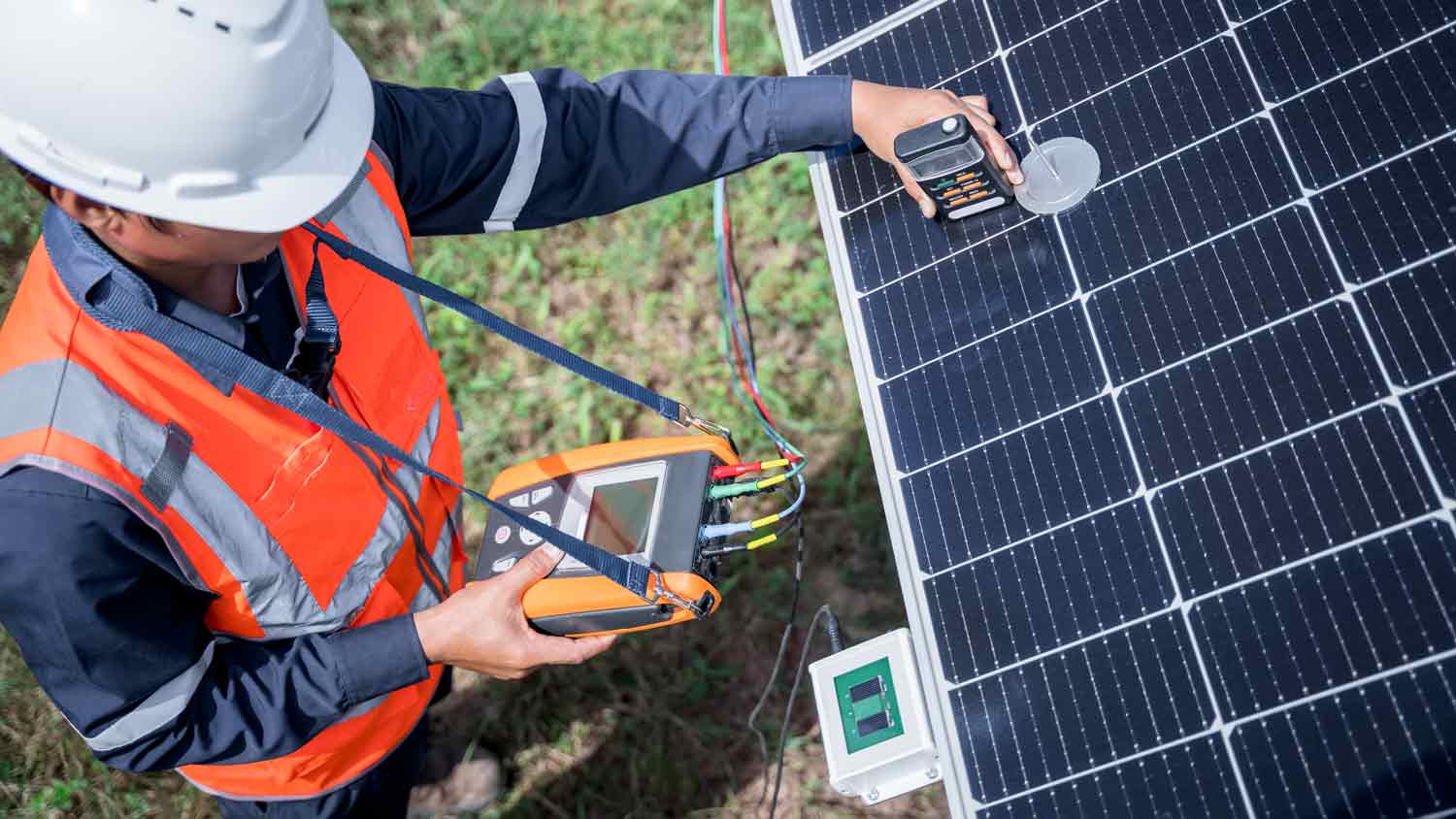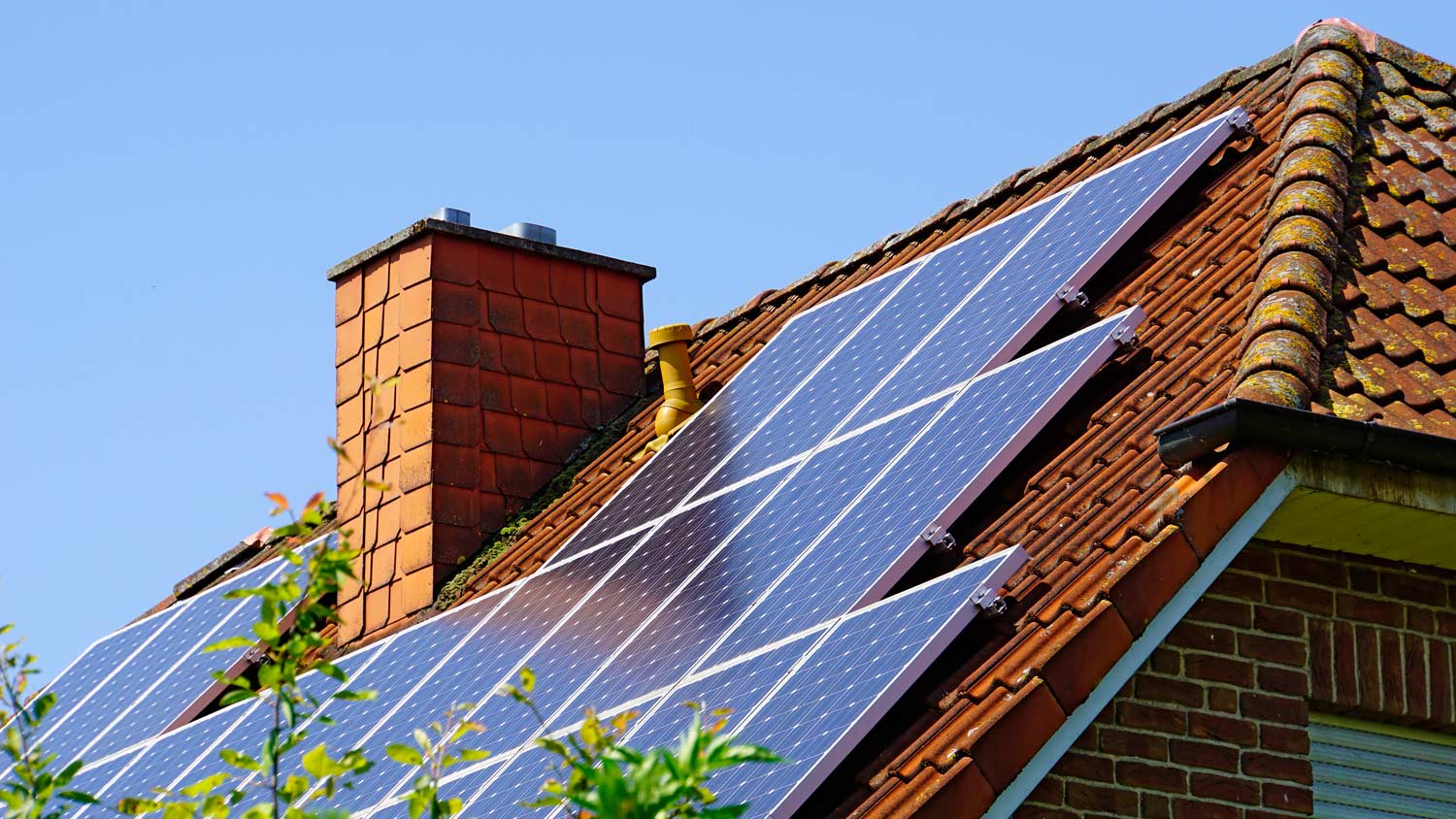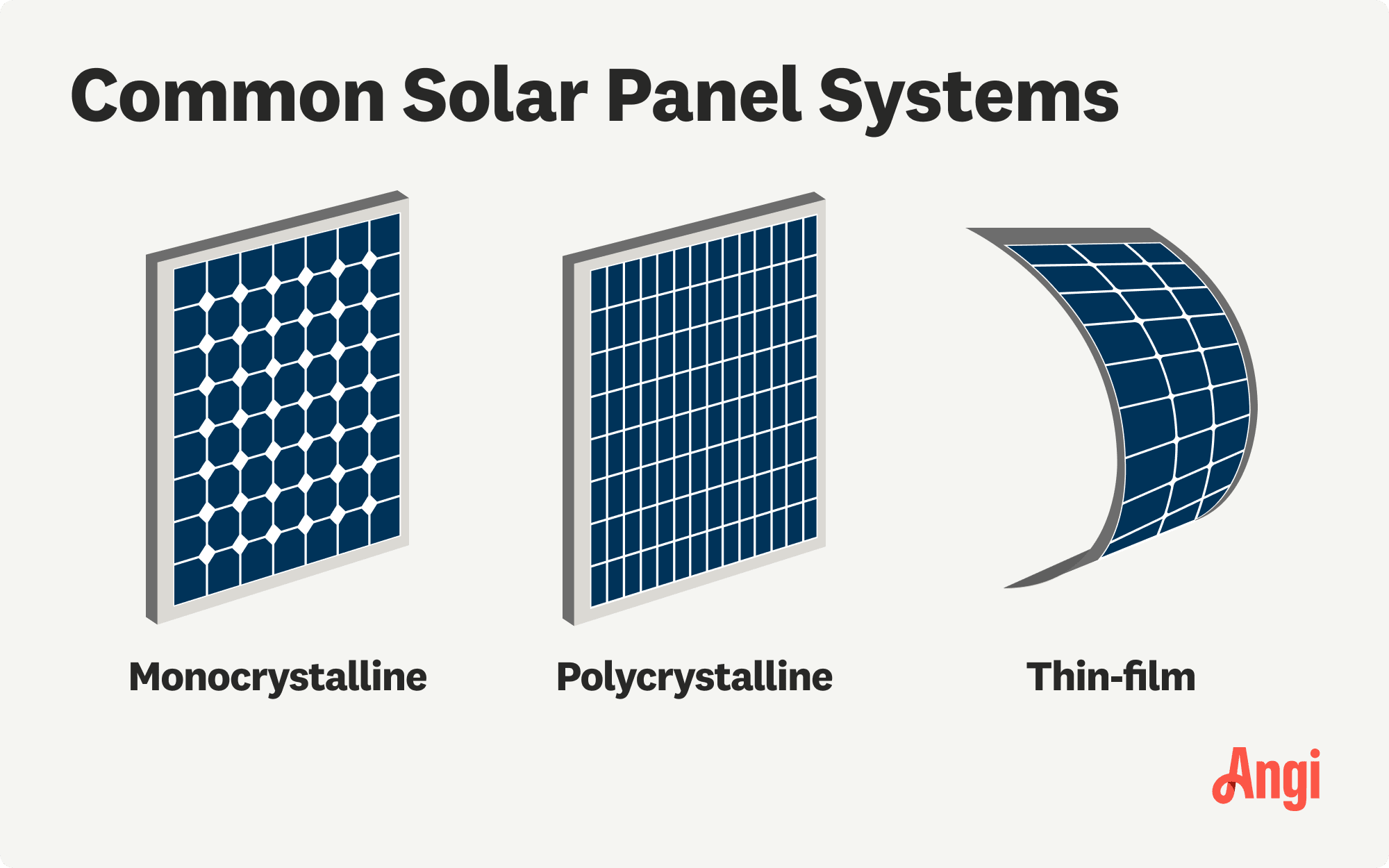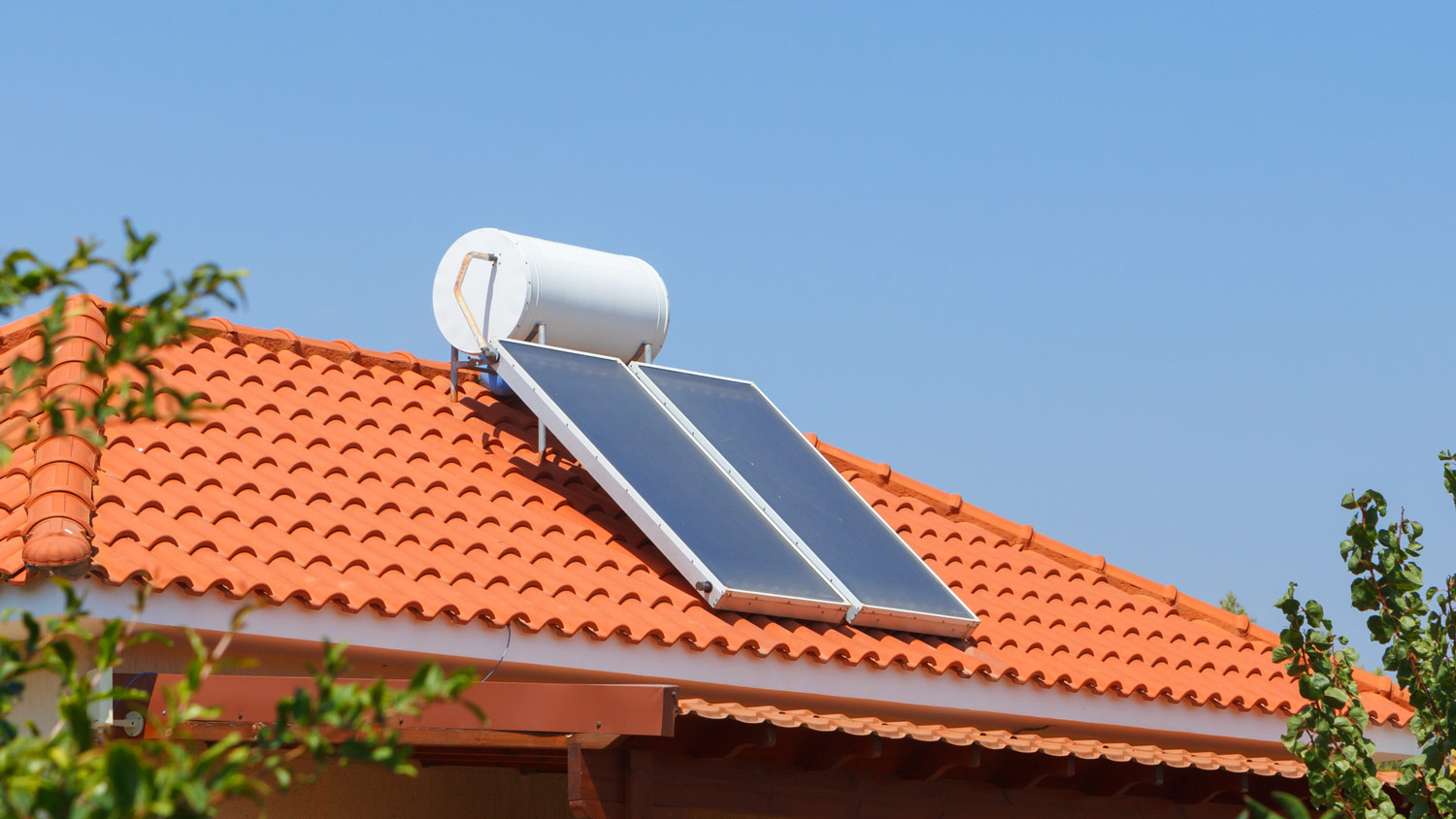
Discover the average solar panel inspection cost, what impacts pricing, and how to save. Get expert tips to keep your solar system efficient and safe.
Installing solar panels in Seattle, Washington, averages $29,007, though it ranges between $22,364 and $37,312 based on system size, panel type, wattage, and more. A solar panel installer can assess your roof and install your system.


Seattle’s cloudy and rainy weather limits sunlight, so monocrystalline solar panels are the most efficient choice.
Installing a solar panel system increases home value by about 4.1%.
The payback period for solar systems in Seattle is eight to 13 years, which is longer than in sunnier cities.
Seattle offers a sales tax exemption, and net metering programs are available for qualifying solar panel systems.
The weather in Seattle is rainy or cloudy more often than not, but solar is still a viable option if you’re looking to cut electricity costs. Solar panel installation costs in Seattle are 6.5% higher than the national average and range between $22,364 and $37,312. The average project costs $29,007. Breaking down how the system size, type of panels, labor, and more play a part in your project’s total cost will help you build a budget.
Here are the most significant cost factors affecting solar panel installation in Seattle, Washington.
The size of the solar system will impact your solar panel installation costs. The larger the output, the more you’ll pay. Most homes need 6- to 10-kW (kilowatt) systems, which work out to anywhere from 15 to 34 panels, depending on the wattage.
The table below shows average costs based on the size of your solar system:
| Solar System Size (kW) | Average Cost |
|---|---|
| 5 | $13,300–$18,650 |
| 6 | $15,975–$22,375 |
| 7 | $18,650–$26,100 |
| 8 | $18,750–$29,825 |
| 9 | $23,950–$33,550 |
| 10 | $26,625–$37,275 |
| 11 | $29,300–$41,000 |
| 12 | $31,950–$44,750 |

When choosing the type of solar panel that works best for your home, consider three main factors: efficiency, life expectancy, and design. Here’s how the type of solar panel can affect your cost:
| Type of Solar Panel | Average Cost per Watt | Lifespan (Years) | Pros | Cons |
|---|---|---|---|---|
| Monocrystalline | $1–$1.50 | 40 | Performs well in cloudy conditions | High cost |
| Polycrystalline | $0.90–$1 | 25–30 | Mid-range cost is more affordable | Not as efficient in cloudy weather |
| Thin film | $0.70–$1 | 10–20 | Performs well in cloudy weather | Short lifespan, takes up more roof space |
On average, most homes need anywhere from 20 to 25 panels to fully power a home, but this can range from as few as 15 to as many as 34. How many solar panels you need depends on the number of watts per panel, your energy consumption, and the efficiency of your panels. Your average solar panel will have an output of anywhere from 250 to 400 watts. The dimensions of your solar panels will also depend on the power output.
Additional costs include the solar system hardware you need, depending on your pro’s recommendations for the design. The more advanced the technology, the higher the up-front cost. The type of mount will affect the cost as well:
Fixed mounts: $10–$15 per mount
Adjustable mounts: $50 per mount
Tracking: $500–$3,000 or more per mount (these mounts can self-track sunlight, leading to up to 45% more energy production)
Other materials you will need for a solar energy system include the parts in the table below.
| Hardware | Average Cost |
|---|---|
| String inverter | $1,000–$3,000 each |
| Microinverters | $150–$300 each |
| Power optimizer | $80–$150 each |
| Solar battery | $400–$15,000 |
Inverter and microinverters: Convert direct current (DC) electricity to alternating current (AC) electricity
Optimizer: Regulates currents so each panel is more energy efficient and prevents power loss.
Battery: Stores excess energy from the system so homeowners can use it at night or during a power outage
Some systems use a single solar inverter or several microinverters that convert DC to AC electricity. Materials like the wiring and battery are often grouped with the package price unless you opt for add-on services.
Hiring an experienced pro to install your solar panels is key to making the most of this exciting new home addition. Your pro will ensure that everything is done properly and to code. Budget $0.50 per watt for labor when you hire a solar panel installer in Seattle, Washington. This number doesn’t include permits or the cost of additional technology, such as special mounts, tiles, or shingles.
Solar panel installation does require electrical work. Though many solar panel installation companies have a licensed electrician on staff who specializes in solar panels, roofing contractors sometimes subcontract an electrician. The average cost of hiring an electrician is $60 to $120 per hour.
You’ll need permits for installing a solar panel system in Seattle. A building permit may be required depending on the type of system and design. You’ll need an electrical permit, which costs $1,045 on average. The actual amount of the permit fee fluctuates depending on the total project costs.
Zillow reports that if you own the solar panel system, going solar can increase home value by approximately 4.1%. Solar panel installation increases your Seattle home’s value by 4.1%. However, if you’re leasing panels or you’re on a Power Purchase Plan agreement, your home won’t increase in value. Keep in mind that an investment in solar panels is estimated to return 35%.
In Seattle, where there are about 165 sunny days a year, solar is still beneficial if you have a shade-free roof. However, potential homeowners may not expect or want solar panels since they’re not common in the area. Note that if your panels are nearing the end of their lifespan, homebuyers may not see them as a desired feature since they’ll have to be replaced soon.
The payback period, which is the number of years it takes for you to break even on your solar investment, is eight to 13 years in Seattle. This is significantly longer than in sunnier cities like Atlanta and Los Angeles, where the payback period is seven to nine years. Weigh these pros and cons as you decide whether a solar system is right for you.
Once your solar panels are paid off, they're officially your property. If you move, you can reinstall them on a new rooftop. Alternatively, they can increase the value of your home by 3% to 4% and attract more buyers. They can also give your property a competitive edge in a buyers’ market.
The best way to save money on the up-front costs of installing solar panels is to take advantage of the Solar Investment Tax Credit (ITC) before it ends on December 31, 2025. The ITC allows homeowners to claim a federal tax credit equal to 30% of the price of their solar panel system installation.
For example, if your solar panel system costs $30,000 before the federal tax credit, you can save around $9,000. However, to benefit from this credit, your solar system has to be installed and working before the federal incentive ends.
The ITC, also known as the Residential Clean Energy Credit, was originally extended through 2032 as part of the Inflation Reduction Act. However, new federal legislation (the Big Beautiful Bill Act) signed into law on July 4, 2025, terminated the credit early. The Solar Energy Industries Association® (SEIA) outlines the high-level policy changes and restrictions on energy tax credits.
Additionally, the extra power you choose not to store in a battery can be sent back to the grid. Your local utility company will compensate you for that power, but the amount will vary. You can check the Utility Rate Database on Open EI to estimate how much you can expect to receive for generating excess energy.
The sales tax exemption in Washington applies to solar panel systems under 100 kilowatts, which encompasses most residential projects. However, there aren’t property tax exemptions, so your property taxes will increase because installing a solar panel system increases home value.
Net metering programs in Seattle offer credit for electricity produced by your solar panels that you don’t use in your home. However, there are restrictions, so contact your utility company to learn more. Seattle City Light currently offers a net meter aggregation option, which offers the chance to share extra electricity with another meter on the same account.
Lastly, qualifying low-income households can receive incentives for community solar projects from the WSU Community Solar Expansion Program.
Home is the most important place on earth, which is why Angi has helped more than 150 million homeowners transform their houses into homes they adore. To help homeowners with their next project, Angi provides readers with the most accurate cost data and upholds strict editorial standards. We survey real Angi customers about their project costs to develop the pricing data you see, so you can make the best decisions for you and your home. We pair this data with research from reputable sources, including the U.S. Bureau of Labor Statistics, academic journals, market studies, and interviews with industry experts—all to ensure our prices reflect real-world projects.
Want to help us improve our cost data? Send us a recent project quote to [email protected]. Quotes and personal information will not be shared publicly.
From average costs to expert advice, get all the answers you need to get your job done.

Discover the average solar panel inspection cost, what impacts pricing, and how to save. Get expert tips to keep your solar system efficient and safe.

Get a clear estimate for solar water heater repair cost. Learn what impacts pricing and how to budget for your solar water heater repair.

There are a few factors to consider when it comes to solar panel repair costs. This guide breaks down the prices of solar panel removal, repair, and replacement.

Planning to install solar panels? You’ll need a solar inverter. Follow this guide to calculate the best solar panel inverter size for your system.

Before making a decision, learn all the pros and cons of leasing solar panels so you can decide if it's the right decision for your home and your wallet.

Even the best solar panels don’t last forever. This guide will help you understand how long solar panels last and how to make the most of their lifespan.